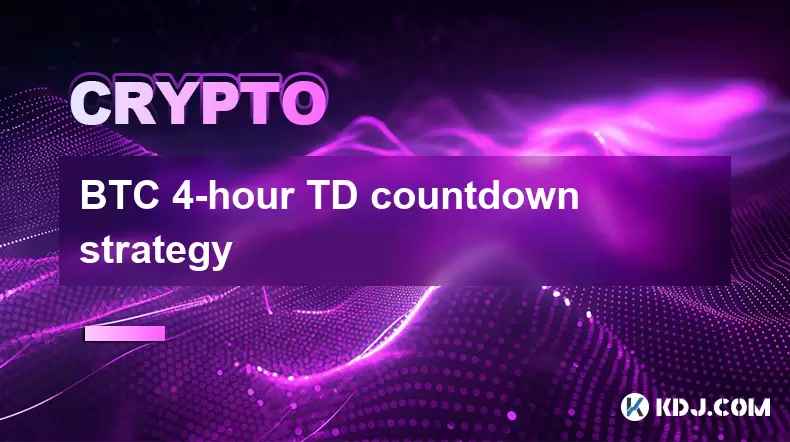-
 Bitcoin
Bitcoin $116700
0.24% -
 Ethereum
Ethereum $3973
4.34% -
 XRP
XRP $3.283
7.68% -
 Tether USDt
Tether USDt $1.000
0.01% -
 BNB
BNB $789.8
2.27% -
 Solana
Solana $176.2
3.31% -
 USDC
USDC $0.9999
0.00% -
 Dogecoin
Dogecoin $0.2238
5.14% -
 TRON
TRON $0.3389
-0.51% -
 Cardano
Cardano $0.7907
4.03% -
 Stellar
Stellar $0.4527
10.02% -
 Hyperliquid
Hyperliquid $41.07
4.27% -
 Sui
Sui $3.794
1.77% -
 Chainlink
Chainlink $19.49
10.40% -
 Bitcoin Cash
Bitcoin Cash $580.9
0.74% -
 Hedera
Hedera $0.2617
4.32% -
 Avalanche
Avalanche $23.41
3.67% -
 Ethena USDe
Ethena USDe $1.001
-0.03% -
 Litecoin
Litecoin $122.4
1.38% -
 Toncoin
Toncoin $3.364
1.49% -
 UNUS SED LEO
UNUS SED LEO $8.988
0.37% -
 Shiba Inu
Shiba Inu $0.00001295
2.82% -
 Uniswap
Uniswap $10.62
5.75% -
 Polkadot
Polkadot $3.922
4.46% -
 Dai
Dai $1.000
0.01% -
 Bitget Token
Bitget Token $4.494
2.15% -
 Monero
Monero $268.0
-1.30% -
 Cronos
Cronos $0.1523
3.68% -
 Pepe
Pepe $0.00001127
4.43% -
 Aave
Aave $285.4
4.85%
BTC 4-hour TD countdown strategy
The BTC 4-hour TD countdown strategy uses the Tom DeMark Sequential indicator to predict Bitcoin price reversals, guiding traders on entry and exit points.
Jun 01, 2025 at 02:29 am

The BTC 4-hour TD countdown strategy is a technical analysis tool used by traders to predict potential reversals in the Bitcoin market. This strategy is based on the Tom DeMark (TD) Sequential indicator, which is renowned for its ability to identify potential exhaustion points in price movements. In this article, we will delve into the intricacies of the TD countdown strategy, its application on the 4-hour Bitcoin chart, and how traders can effectively use it to make informed trading decisions.
Understanding the TD Sequential Indicator
The TD Sequential indicator is a versatile tool that helps traders identify potential price exhaustion points. Developed by Tom DeMark, this indicator consists of two main components: the TD Setup and the TD Countdown. The TD Setup phase counts the number of consecutive price bars that meet specific criteria, signaling the beginning of a potential trend exhaustion. Once the setup phase is complete, the TD Countdown phase begins, which counts down to the point where a price reversal is most likely to occur.
Applying the TD Sequential Indicator to the 4-hour BTC Chart
To effectively use the TD Sequential indicator on the 4-hour Bitcoin chart, traders must first understand how to set up the indicator on their trading platform. Most trading platforms, such as TradingView or MetaTrader, offer the TD Sequential indicator as a customizable tool. Here’s how to set it up:
- Open your trading platform and navigate to the Bitcoin chart.
- Select the 4-hour timeframe to align with the strategy.
- Add the TD Sequential indicator to the chart. This can usually be done by searching for "TD Sequential" in the indicator library and applying it to the chart.
- Adjust the settings if necessary, ensuring that the setup and countdown phases are clearly visible on the chart.
Identifying the TD Setup on the 4-hour BTC Chart
The first step in the TD countdown strategy is to identify the TD Setup on the 4-hour Bitcoin chart. The setup phase requires a series of price bars that meet specific conditions. For a bullish setup, the price must close lower than the low four bars earlier. For a bearish setup, the price must close higher than the high four bars earlier. The setup phase is complete when there are nine consecutive bars meeting these criteria.
Here’s how to identify the TD Setup on the 4-hour BTC chart:
- Monitor the 4-hour chart for a series of price bars that meet the setup criteria.
- Count the number of bars that satisfy the conditions for a bullish or bearish setup.
- Confirm the setup once nine consecutive bars have met the criteria.
Initiating the TD Countdown on the 4-hour BTC Chart
Once the TD Setup is complete, the TD Countdown phase begins. The countdown phase counts down from nine to one, signaling the potential exhaustion of the current trend and the likelihood of a price reversal. The countdown phase is triggered when the price closes above the high two bars earlier for a bullish countdown, or below the low two bars earlier for a bearish countdown.
Here’s how to initiate the TD Countdown on the 4-hour BTC chart:
- Identify the completion of the TD Setup on the chart.
- Monitor the price action following the setup completion.
- Count the number of bars that meet the countdown criteria.
- Confirm the countdown once it reaches one, indicating a high probability of a price reversal.
Trading Signals from the TD Countdown Strategy
The TD countdown strategy provides traders with clear signals for potential entry and exit points. When the countdown reaches one, it signals a high probability of a price reversal. Traders can use this signal to enter a trade in the direction of the anticipated reversal.
Here are some key trading signals to look for:
- Bullish Reversal Signal: When the bullish TD Countdown reaches one, it suggests a potential reversal from a downtrend to an uptrend. Traders can enter a long position, anticipating a price increase.
- Bearish Reversal Signal: When the bearish TD Countdown reaches one, it suggests a potential reversal from an uptrend to a downtrend. Traders can enter a short position, anticipating a price decrease.
Managing Risk with the TD Countdown Strategy
Effective risk management is crucial when using the TD countdown strategy. Traders should always set stop-loss orders to limit potential losses. The stop-loss level can be set just beyond the recent high or low that triggered the countdown phase.
Here are some risk management tips:
- Set a stop-loss order just beyond the high or low that initiated the countdown.
- Determine a risk-reward ratio to ensure that potential profits outweigh potential losses.
- Monitor the trade closely, adjusting the stop-loss as the price moves in your favor to lock in profits.
Practical Example of the TD Countdown Strategy on the 4-hour BTC Chart
To illustrate the practical application of the TD countdown strategy, let’s consider a hypothetical example on the 4-hour Bitcoin chart.
- Identify a bearish TD Setup: Suppose the 4-hour chart shows nine consecutive bars closing higher than the high four bars earlier, completing a bearish setup.
- Initiate the bearish TD Countdown: Following the setup, the price closes below the low two bars earlier, initiating the countdown.
- Monitor the countdown: The countdown progresses from nine to one as the price continues to meet the criteria.
- Enter a short position: When the countdown reaches one, a bearish reversal is anticipated. Traders can enter a short position, setting a stop-loss just above the recent high.
- Manage the trade: As the price moves in favor of the short position, traders can adjust the stop-loss to lock in profits.
Frequently Asked Questions
Q: Can the TD countdown strategy be used on other cryptocurrencies?
A: Yes, the TD countdown strategy can be applied to other cryptocurrencies as well. The principles of the TD Sequential indicator remain the same, but traders should be aware that different cryptocurrencies may exhibit varying levels of volatility and liquidity, which can affect the effectiveness of the strategy.
Q: How reliable is the TD countdown strategy for predicting Bitcoin price reversals?
A: The reliability of the TD countdown strategy depends on various factors, including market conditions and the trader's ability to correctly interpret the signals. While the strategy has been successful in identifying potential reversals, it is not foolproof and should be used in conjunction with other technical analysis tools and risk management techniques.
Q: Is it necessary to use the 4-hour timeframe for the TD countdown strategy, or can other timeframes be used?
A: While the 4-hour timeframe is commonly used for the TD countdown strategy, other timeframes can also be employed. Shorter timeframes may provide more frequent signals but could be less reliable, while longer timeframes may offer more reliable signals but fewer trading opportunities. Traders should experiment with different timeframes to find what works best for their trading style.
Q: How can the TD countdown strategy be combined with other technical indicators for better results?
A: The TD countdown strategy can be enhanced by combining it with other technical indicators such as moving averages, the Relative Strength Index (RSI), and the Moving Average Convergence Divergence (MACD). These indicators can provide additional confirmation of potential reversals and help traders make more informed decisions. For example, a bullish TD Countdown signal combined with an RSI reading below 30 could indicate a strong buying opportunity.
Disclaimer:info@kdj.com
The information provided is not trading advice. kdj.com does not assume any responsibility for any investments made based on the information provided in this article. Cryptocurrencies are highly volatile and it is highly recommended that you invest with caution after thorough research!
If you believe that the content used on this website infringes your copyright, please contact us immediately (info@kdj.com) and we will delete it promptly.
- Bitcoin, Litecoin, and Avalanche: Decoding the Crypto Buzz in the Big Apple
- 2025-08-09 00:30:12
- Pengu Takes Flight: Can This Solana Meme Coin Conquer the Top 3?
- 2025-08-09 00:50:13
- Ethereum and Shiba Inu: Navigating the Bull Move
- 2025-08-09 00:35:12
- Navigating the Crypto Market in 2025: Smart Decisions for Meme Coin Investing
- 2025-08-09 00:55:55
- Punisher Coin: The Altcoin Ready to Punish Your Portfolio with Gains?
- 2025-08-08 22:50:16
- Mutuum Finance, Bitcoin Whales, and Binance: Decoding the Crypto Currents
- 2025-08-08 22:30:11
Related knowledge

Can the Bitcoin protocol be changed?
Aug 07,2025 at 01:16pm
Understanding the Bitcoin ProtocolThe Bitcoin protocol is the foundational set of rules that govern how the Bitcoin network operates. It defines every...

How are Bitcoin transactions verified?
Aug 08,2025 at 06:57am
Understanding Bitcoin Transaction VerificationBitcoin transactions are verified through a decentralized network of nodes and miners that ensure the le...

How does decentralization make Bitcoin secure?
Aug 08,2025 at 09:35am
Understanding Decentralization in BitcoinDecentralization is a foundational principle of Bitcoin's architecture and plays a critical role in its secur...

What are some common misconceptions about Bitcoin?
Aug 07,2025 at 07:22pm
Bitcoin is Just Like Regular MoneyA widespread misconception is that Bitcoin functions identically to traditional fiat currencies like the US dollar o...

What is the role of nodes in the Bitcoin network?
Aug 08,2025 at 04:14pm
Understanding the Function of Nodes in the Bitcoin NetworkNodes are fundamental components of the Bitcoin network, serving as the backbone that ensure...

Is Bitcoin a solution for inflation?
Aug 08,2025 at 04:57am
Understanding Inflation and Its Impact on Traditional CurrenciesInflation refers to the sustained increase in the price of goods and services over tim...

Can the Bitcoin protocol be changed?
Aug 07,2025 at 01:16pm
Understanding the Bitcoin ProtocolThe Bitcoin protocol is the foundational set of rules that govern how the Bitcoin network operates. It defines every...

How are Bitcoin transactions verified?
Aug 08,2025 at 06:57am
Understanding Bitcoin Transaction VerificationBitcoin transactions are verified through a decentralized network of nodes and miners that ensure the le...

How does decentralization make Bitcoin secure?
Aug 08,2025 at 09:35am
Understanding Decentralization in BitcoinDecentralization is a foundational principle of Bitcoin's architecture and plays a critical role in its secur...

What are some common misconceptions about Bitcoin?
Aug 07,2025 at 07:22pm
Bitcoin is Just Like Regular MoneyA widespread misconception is that Bitcoin functions identically to traditional fiat currencies like the US dollar o...

What is the role of nodes in the Bitcoin network?
Aug 08,2025 at 04:14pm
Understanding the Function of Nodes in the Bitcoin NetworkNodes are fundamental components of the Bitcoin network, serving as the backbone that ensure...

Is Bitcoin a solution for inflation?
Aug 08,2025 at 04:57am
Understanding Inflation and Its Impact on Traditional CurrenciesInflation refers to the sustained increase in the price of goods and services over tim...
See all articles

























































































